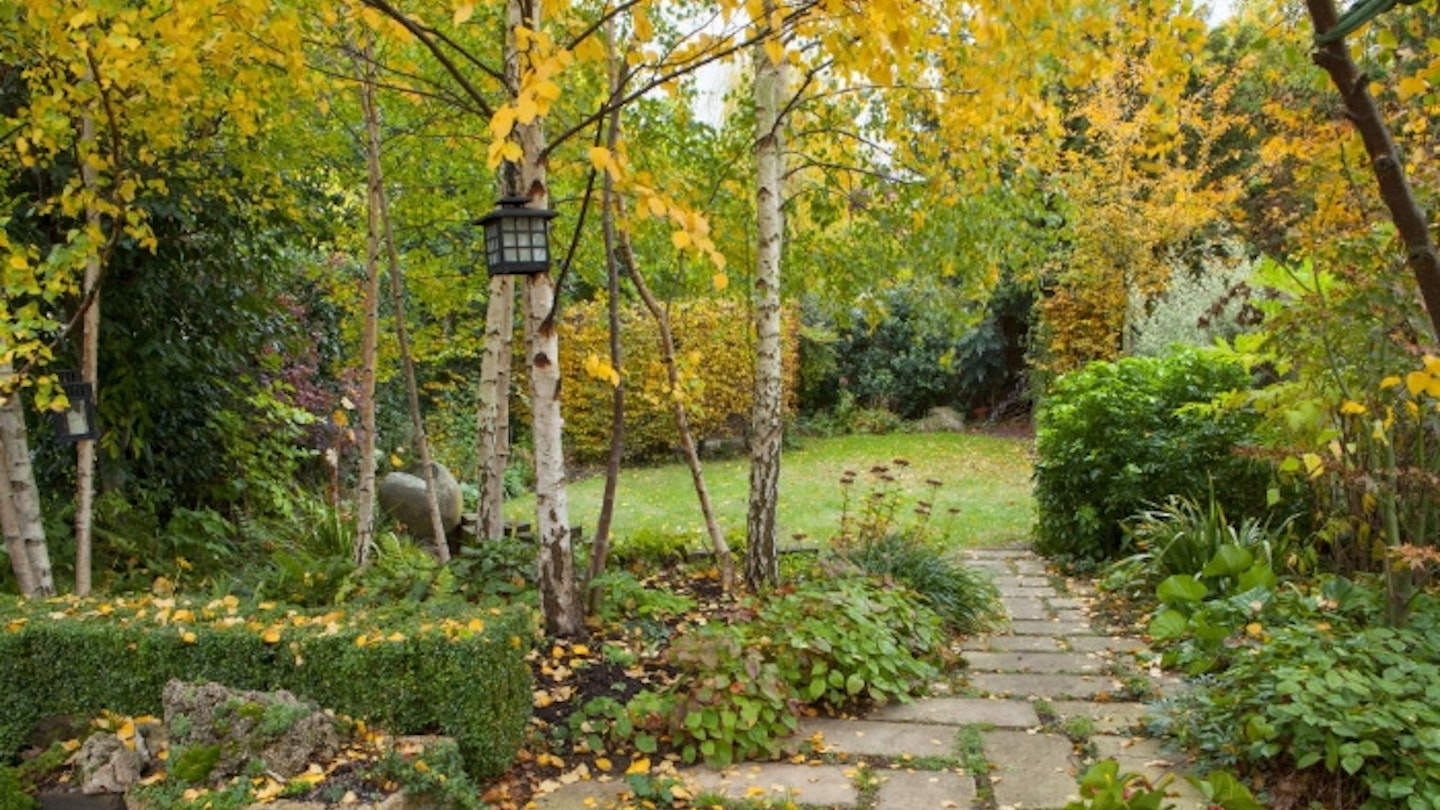GARDEN DESIGNER JILL BILLINGTON IS PERMITTED TO SHOW A LITTLE FAVOURITISM TO HER VERY OWN PLOT.
“Out of all the gardens I’ve done, I can say I like mine more than any,” she says with pride.
Twelve years ago Jill, also a lecturer and author, took this modest suburban plot in Enfield, North London, and turned it into a handsome garden with year-round good looks. Her highlight is her “precious” miniature woodland, four metres deep. When Jill started the redesign she began with a glass-walled conservatory.
“It was very important for us to look straight onto the garden,”she explained. “You can stand there through the year and the scene changes every day.” Her treasured woodland is the centrepiece of this view, with a string of silver birches breaking up the garden.
“The trees are all wild European silver birch,” says Jill, “but they’re all slightly different, with some slightly weepy, and that whole randomness is a great thing. I deliberately stayed with something that isn’t too flash and, throughout the year, you look at them from the conservatory and there are these gleaming colours. Even when there are no leaves, it’s very striking.”
The woodland helps to divide the garden so that it has a succession of different identities. In front of the trees is a large paved area, big enough for entertaining family and friends and a home to planting troughs. Behind is a lawn and sunny, herbaceous planting, before finally Jill’s sanctuary, a circular enclosed planting of hornbeam hedge.
“It has slits you can see through and it’s where I can escape from the grandchildren!” It also means that the end of the garden isn’t obvious, giving the illusion it’s far bigger than its 18m (60ft) length. Beneath the simple birch silhouettes is a year-round tapestry of underplanting, beginning in spring with the wild daffodil Narcissus pseudonarcissus. “I grew up in the Lake District,” says Jill, “and I’m a bit of a frustrated country dweller really. I have a lot of those daffodils in spring.”
Joining them is a succession of woodland plants, some donated by friends while others were sourced from Long Acre Plants, Somerset. There are erythroniums, arums, Luzula sylvatica, Geranium sylvaticum ‘Amy Doncaster’ and ‘Nikita’, autumn cyclamen and Anemone hybrida. Jill uses delicately flowered epimediums as edging “they’re neat but not too neat” and has a soft spot for leaf-mould loving martagon lily, Lilium martagon, the huge-leaved Bergenia ciliate and ferns including Dryopteris erythrosora, Polystichum aculeatum and Asplenium scolopendrium. The last earns points for being “a very simple fern that appears glossy and reflective even in shade and looks after itself”.
Because the birch are shallow-rooted, Jill adds several inches of leaf mould and compost every autumn to be sure the ferns and other plants continue to thrive. The garden’s London location means that it’s already fairly sheltered, but Jill has deliberately built up both sides of the plot with a network of evergreens and other shrubs and trees to ensure it has a “quiet and cosy” feel.
“One plant I put in lots of people’s gardens in full shade is the dark red Morello cherry,” says Jill. “It’s a good plant in shade. You can grow it as an espalier and it produces fruit.” For striking winter berries Jill grows the unusual cockspur thorn tree, Crataegus lavalleei ‘Carrierei’. “It’s been terribly slow growing but as well as a pretty leaf, it has striking orange berries and the birds leave it alone.” She also likes the white-berried rowan Sorbus cashmiriana, although after an accidental slicing through of the tree’s roots, she’s in the market for a replacement. The boundary planting means, even in November, it’s difficult to decipher where the fences are. A tall bamboo, Phyllostachys bissetii gives significant screening to one side of the glasshouse but Jillcautions that it must be grown behind a retaining wall. “If I see even a small shoot leaping over I’ll cut it.” Jill also uses Viburnum tinus ‘Eve Price’, mahonia, pyracantha (“they might keep people out but the foxes still jump over them!”) and the grey, woolly-leaved pineapple guava, Acca sellowiana.
